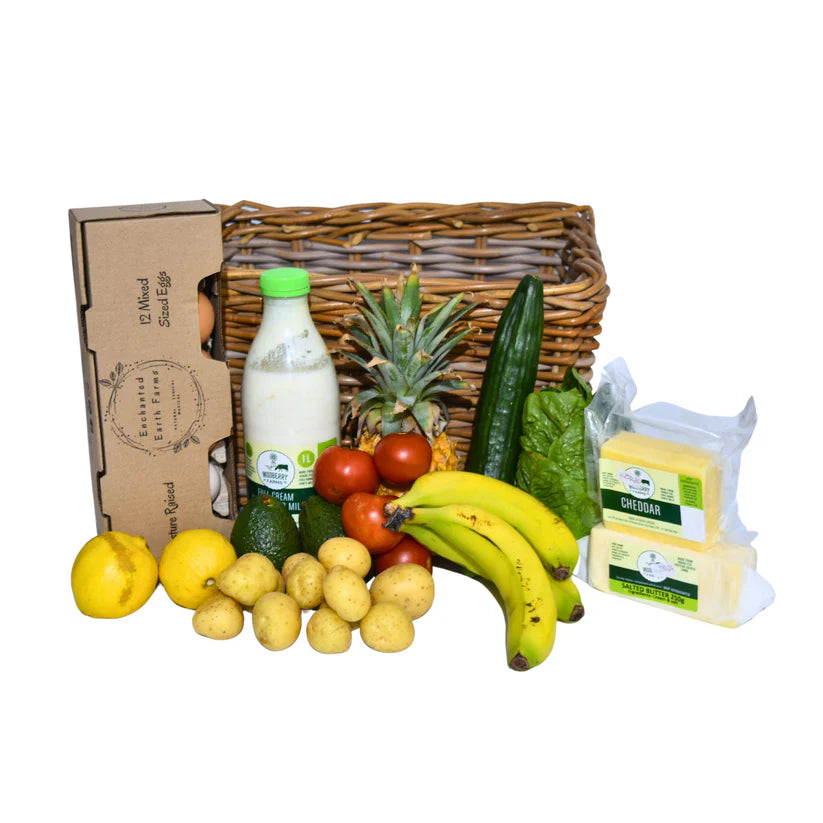Article Summary:
- Organic food prices are influenced by rigorous certification and compliance processes, which require farmers to adhere to strict standards and invest in sustainable practices, ultimately increasing production costs.
- Transportation and distribution challenges, including the need for specialized handling and maintaining separation from non-organic products, add complexity and cost to the organic supply chain, affecting overall pricing.
- Growing consumer demand for organic products often leads to higher prices, as limited supply and increased competition among producers create market pressures that drive costs up, despite the willingness of some consumers to pay a premium for organic foods.
The rising popularity of organic produce in South Africa has led many consumers to question why these healthier options often come with a higher price tag. While organic fruits and vegetables are celebrated for their superior quality and environmental benefits, the costs associated with their production, certification, and distribution contribute to their elevated prices. Understanding the factors that drive the cost of organic produce—such as labor-intensive farming practices, transportation challenges, and compliance with strict regulations—can help consumers appreciate the value of their investment in organic food. In this article, we will explore the various reasons behind the higher costs of organic produce in South Africa, shedding light on the complexities of the organic market and its implications for both farmers and consumers.
Understanding the higher costs of organic produce
Understanding the higher costs of organic produce in South Africa requires a closer look at several interconnected factors that influence pricing. One of the primary reasons for the increased cost is the rigorous farming practices involved in organic agriculture. Unlike conventional farming, which often relies on synthetic fertilizers and pesticides, organic farming emphasizes natural methods for pest control and soil enrichment. This approach not only demands more time and labor but also results in lower yields per hectare, as organic crops are more susceptible to pests and diseases without chemical interventions. Consequently, farmers may need to invest more resources into maintaining the health of their crops, which ultimately translates to higher prices for consumers.

Shop 500g Coconut Flour at Orchard Food
Moreover, the certification process for organic produce adds another layer of expense. In South Africa, farmers must comply with strict regulations set by organizations such as the Department of Agriculture, Forestry and Fisheries (DAFF) and various certification bodies. This process involves extensive documentation, inspections, and adherence to specific standards over a three-year transition period before a farm can be officially recognized as organic. The costs associated with obtaining and maintaining this certification can be substantial, further contributing to the overall price of organic products.
Transportation and distribution also play significant roles in the pricing of organic produce. Many organic farms are smaller operations that may not have the same economies of scale as larger conventional farms. As a result, the logistics of getting organic fruits and vegetables from farm to market can be more complex and costly. Organic produce often requires specialized handling to ensure it remains uncontaminated by non-organic items during transportation, which can lead to increased shipping costs.
Additionally, consumer demand for organic products has surged in recent years, driven by growing awareness of health and environmental issues. While this demand is beneficial for farmers, it can create market pressures that lead to higher prices. The balance between supply and demand is delicate; if demand outpaces supply, prices will naturally rise. This phenomenon is particularly evident in urban areas where access to fresh organic produce may be limited, leading consumers to pay a premium for convenience.
Impact of labor and farming practices on organic food prices
The impact of labor and farming practices on organic food prices is significant and multifaceted, reflecting the inherent challenges of organic agriculture. Organic farming relies heavily on manual labor due to its emphasis on natural methods for pest control, crop management, and soil fertility. Unlike conventional farming, which can utilize chemical inputs to streamline production processes, organic farmers often engage in labor-intensive practices such as hand-weeding, crop rotation, and the use of cover crops to enhance soil health. This reliance on manual labor not only increases operational costs but also requires skilled workers who understand the nuances of organic farming techniques.
Additionally, organic farming practices often involve longer growing cycles and lower yields compared to conventional methods. For instance, organic crops may take more time to mature because they are not treated with synthetic fertilizers that can accelerate growth. As a result, farmers may harvest less produce per hectare, which can lead to higher prices for consumers. The combination of reduced yields and increased labor requirements means that organic farmers must charge more for their products to maintain profitability.
Furthermore, the commitment to sustainable and environmentally friendly practices adds another layer of complexity. Organic farmers often prioritize biodiversity and ecosystem health, which can involve implementing practices like crop rotation and intercropping. While these methods are beneficial for the environment and contribute to long-term soil fertility, they can also complicate planting schedules and require additional labor for management. This holistic approach to farming not only supports healthier ecosystems but also necessitates a greater investment in time and resources, ultimately influencing the pricing of organic produce.
Market dynamics also play a role in how labor and farming practices affect organic food prices. As demand for organic products continues to grow, farmers may face pressure to scale up production. However, transitioning from conventional to organic farming is a lengthy process that requires careful planning and adherence to strict regulations. This transition can be financially burdensome for farmers, who may need to invest in new equipment or training while waiting for their land to be certified as organic.
Transportation and distribution challenges for organic products
Transportation and distribution challenges for organic products significantly influence their pricing and availability in South Africa. One of the primary hurdles is the need for specialized handling to maintain the integrity of organic produce. Unlike conventional products, organic items must be kept separate from non-organic goods throughout the supply chain to prevent contamination. This requirement necessitates dedicated transportation methods and storage facilities, which can increase operational costs. For instance, organic fruits and vegetables may need to be transported in vehicles that are specifically designated for organic products, ensuring that they are not exposed to pesticides or other chemicals used in conventional farming.
Additionally, the logistics of transporting organic produce can be complicated by the perishable nature of these items. Organic fruits and vegetables often have shorter shelf lives compared to their conventionally grown counterparts due to the absence of preservatives and chemical treatments. As a result, timely delivery is crucial to ensure that consumers receive fresh products. This urgency can lead to increased transportation costs, as suppliers must prioritize speed and efficiency in their distribution processes. Furthermore, the limited availability of local organic farms means that many organic products may need to be transported over longer distances, adding to fuel and logistical expenses.
The distribution network for organic products can also be less established than that for conventional foods. Many organic farms are smaller operations that may not have the same resources or infrastructure as larger agricultural enterprises. This can result in challenges related to scale and reach, making it more difficult for these farms to access broader markets. As a consequence, consumers in certain areas may find it harder to locate fresh organic produce, leading to higher prices due to limited supply.
Moreover, fluctuating demand for organic products can create additional complexities in transportation and distribution. When demand surges—such as during health trends or seasonal peaks—suppliers may struggle to keep up with orders while maintaining quality standards. This imbalance can lead to delays in delivery or increased costs as logistics providers scramble to meet consumer expectations.
The role of certification and compliance in organic pricing
The role of certification and compliance in organic pricing is a critical factor that significantly influences the cost of organic produce in South Africa. Organic certification serves as a guarantee to consumers that the products they are purchasing meet specific standards set by regulatory bodies, ensuring that they are grown without synthetic pesticides, herbicides, or genetically modified organisms. This certification process is not only essential for consumer trust but also comes with its own set of costs and requirements that can impact pricing.

Shop our 180g Mint Pesto at Orchard Food
To achieve organic certification, farmers must adhere to strict guidelines established by organizations such as the Department of Agriculture, Forestry and Fisheries (DAFF) and various accredited certification bodies. This process involves comprehensive documentation, regular inspections, and a commitment to sustainable farming practices over a transitional period that can last up to three years. During this time, farmers must demonstrate their ability to manage their land organically, which often requires additional labor and resources. The financial burden of these certification processes can be significant, as farmers must invest in training, record-keeping, and compliance measures to ensure they meet the necessary standards.
Moreover, maintaining organic certification requires ongoing compliance with evolving regulations and standards. Farmers must continuously monitor their practices to ensure they remain in line with organic guidelines, which can involve additional costs for training and resources. This commitment to compliance not only safeguards the integrity of organic products but also adds layers of complexity that contribute to higher prices for consumers.
The impact of certification extends beyond individual farms; it also affects the broader market for organic products. As demand for organic food continues to grow, there is an increasing number of producers seeking certification. However, the limited availability of certified organic farms can create supply constraints, driving up prices due to the basic principles of supply and demand. Additionally, consumers may be willing to pay a premium for certified organic products because they perceive them as healthier and more environmentally friendly options.
Consumer demand and market trends affecting organic food costs
Consumer demand and market trends significantly affect organic food costs in South Africa, reflecting a complex interplay of factors that influence both pricing and purchasing behavior. As awareness of health and environmental issues continues to rise, more consumers are seeking organic options, which has led to increased demand for these products. This heightened interest often results in consumers being willing to pay a premium for organic produce, driven by perceptions of better nutrition, safety, and sustainability. However, this willingness to pay is not uniform across all consumer segments; regular buyers who are loyal to organic products may be less sensitive to price increases compared to light buyers, who may view organic foods as luxury items and are more price-conscious.
Market trends also reveal that economic factors, such as inflation, can impact consumer purchasing decisions. Rising food prices have made some consumers reconsider their spending habits, leading to a decline in organic food consumption among price-sensitive groups. For instance, during periods of high inflation, while the prices of conventional foods may rise even more steeply than those of organic options, the overall perception of affordability can deter casual buyers from choosing organic products. Additionally, competition from other premium labels—such as local or fresh produce—can divert attention away from organic offerings, further influencing market dynamics.
The growth of the organic market is also shaped by broader societal trends, including increased health consciousness and a strong emphasis on sustainable practices. As consumers become more educated about the benefits of organic farming and its positive impact on the environment, there is a growing expectation for retailers to provide a diverse range of organic options. This demand encourages producers to invest in organic farming practices but can also lead to higher prices due to the costs associated with certification and compliance.










